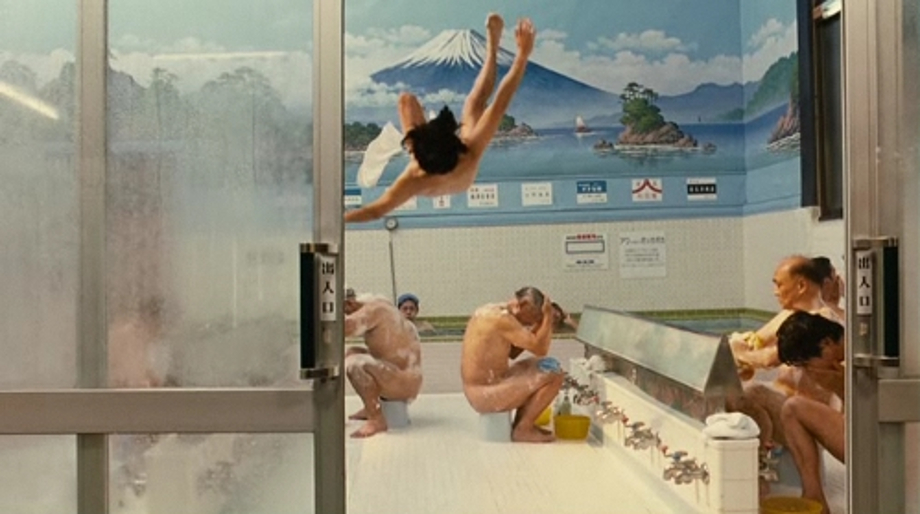An attempted suicide and a discreet assassination.
A struggling actor and an underachiever of life in general, Sakurai can’t even succeed in hanging himself. He finds himself completely out of luck and money in the chaos of his room. Meanwhile, Kondo, a dark and smooth man of exquisite tastes, completes his mission again – an assassination of a successful businessman – in a perfect discretion. It is literally in a matter of seconds he finishes his job, without any trace. These two strangers meet, in all places, in a public bath. Ignited by one of the most poetic cinematic justice, another story of the Prince and the Pauper begins. Kondo is knocked out by a freak accident, losing his consciousness. Sakurai sees the opportunity: he switches their locker keys, remembering Kondo’s fat wallet. The difference with the classic tale is that these characters don’t know who they are supposed to be becoming. Sakurai has the faintest idea about what Kondo does for his living, except he has a lot of money. Kondo temporarily loses his memory, and genuinely believes he is Sakurai, but doesn’t know anything about him.
The film resides on the premise that everyone acts out one’s role, no matter what one’s actual desires are. The meticulous methods of Kondo actually makes him Sakurai. Making notes on every detail of Sakurai’s life, from his possessions to even his favorite cigarette brand, he becomes Sakurai, as if a Method actor immerse himself into the character he is playing. Meanwhile, Sakurai is just what he is: an amateur actor, playing the character as it fits him, not the other way around. Kanae Mizushima, an editor of a magazine who acquaints with Kondo in the hospital, is also an actor of her life. She plans everything ahead in detail, even her wedding before she finds a partner, and acts it out accordingly. The original title of the movie is “The Key Thief’s Method”, method as in Method acting.
The film employs numerous plot devices, mise-en-scene, and clever dialog to drive the narrative forward. And it really works. The director Uchida uses rather restrained, quiet camera to capture pivotal scenes. One of my favorite is the scene at the supermarket parking lot. When Sakurai tries to flee from Yakuza, driving his (or Kondo’s) car frantically to shake off a group of menacing men, the camera remains at a long shot, a bird-eye’s view of the parking lot. It captures the multiple events in parallel inside the frame. Its orange-ish late afternoon atmosphere brings the scene such a natural look. It’s cinematic.
Most of the Japanese screens today are filled with animes and adaptation of popular mangas and novels. These tend to rely on the characters and situations without really adapted to cinematic language. Uchida wrote the original story and screenplay for Key of Life. And it shows. Crafts of cinema are well integrated into the story. It’s an old school, but it’s fun.
KEY OF LIFE (鍵泥棒のメソッド, 2012)
Written and Directed by Kenji Uchida
Cinematography by Akira Sako
Original Music by Yusuke Tanaka
Starring: Teruyuki Kagawa, Masato Sakai, Ryoko Hirosue
By the way, Teruyuki kagawa is the grandson of the actress Sanae Takasugi (starred in Mizoguchi’s WOMEN OF NIGHT, Ozu’s MUNAKATA SISTERS and Shimazu’s MY LITTLE NEIGHBOR, YAE).
Copyrighted materials, if any, on this web page are included as “fair use”. These are used for the purpose of research, review or critical analysis, and will be removed at the request of copyright owner(s).

